Porsche Camp4 Canada Winter Driving Experience [Feature]
Driving smoothly, like many pursuits that require coordination, does not come easy for me. Aside from possessing the typical auto journalist’s command of a car around a race track, I tend to learn things backwards – the most difficult concepts are easily mastered, while the building blocks of the craft tend to frustrate me like a slow child helplessly grasping at phonics. The pattern repeated itself at Porsche’s Camp4 Canada Winter Driving school, where despite the constant grins, I found myself humbled by own capabilities, and the ease at which the vaunted sports cars could tackle the kind of driving conditions that makes most Porsche owners charge straight to their Cayennes.
FAST FACTS
| 1. Held each year in Finland, Porsche’s Camp4 winter driving adventure travels to Canada for the first time ever and Porsche has confirmed it won’t be the last. |
| 2. The $4,995 cost includes almost everything but your flight. |
| 3. Driving takes place at the Mecaglisse circuit in Mont Tremblant, Quebec, about an hour’s drive north of Montreal. |
| 4. With dates in February and March in 2011, look for a similar schedule next winter. |
| 5. To book your spot call 1-800- PORSCHE or visit http://www.porsche.ca/campt4canada |
Situated at the Mecaglisse circuit in the wilderness of Quebec, Mecaglisse doesn’t shut its doors in the winter months like most tracks, but turns into an icy amusement park for those brave enough to try their hand at driving fast in sub-optimal conditions. Porsche, which operates its Camp4 school in Finland, decided to offer a similar program for North American customers at the facility, and brought over a whole fleet of German-spec Cayman S and 911 Carerra4 sports cars for participants to use during the multi-day program. Normally a two day course, Porsche offered a select few journalists a one-day chance to experience just how much fun (and learning) is on offer. All cars were equipped with Nokian snow tires and 1.5mm studs – a similar setup to my ancient BMW 325e ice racer, which left me feeling undeservedly confident.
GETTING THE BASICS RIGHT
As Camp4 instructor J.P. Clinging eloquently put it, the excercises are designed in a manner similar to Mr. Miyagi’s karate program. “First we learn how to wax on, and wax off, then we move on”. Unlike Daniel-san, I had trouble with the “wax on” part of the equation, while the synthesis of all the skills gave no trouble at all. Your mileage (hopefully) may vary.
Our first exercise was a simple skidpad, which Clinging used to teach us the basics of understeer and oversteer. Our vehicles, shiny new Carerra 4S Cabriolets, were equipped with all-wheel drive and Porsche’s PDK dual-clutch transmission – the sort of car that enthusiasts usually write off as a poseur’s 911, but Porsche had the last laugh in the end. The cabrio’s AWD system can transfer almost all of the power to the front wheels if needed, and I approached the task like I would if I was in a traditional rear-drive car; stomp the throttle to get the back end going, countersteer and slide away in a blaze of glory.
Naturally, this proved to be the absolute worst way to get the desired oversteer and many of my runs were textbook examples of what not to do. I later discovered that a bit of finesse is required. Due to the way power is shifted from front to back, one must hit the gas hard, then immediately lift to induce oversteer, and then maintain a constant level of throttle while countersteering. Once this became apparent, all that was left was looking where I wanted to go – a concept that sounds so simple, but can easily be forgotten, leading to less than desirable results. Proper vision will make all the difference between greatness and embarrassment, as the brain will naturally let you take the car to wherever you are looking. Keep your eyes pointed to the corner exit and you are guaranteed to get there. Keep them staring at the gauge cluster (or one of the pretty female hostesses) and your run will be fit for the blooper reel. Clinging encouraged us to hit the cabrio’s Sport button, which would both tighten up the shocks and make the throttle more responsive, but my own lagging reflexes found the standard setting more rewarding.
Once we had graduated from the simple circular course, the difficulty level was increased, and we were given the keys to a fleet of Cayman S coupes, and instructed to drift around a miniature road course and then complete a slalom. With rear drive and stability control turned off, the Caymans would be much more eager to get their rear ends sliding, but equally less inclined to aid the driver in recovering the car.
Even though the Cayman is, on paper, the less able choice for icy driving, the more linear response of the car, coupled with the quick hands needed to catch the slide made it a blast when zooming up and down the course’s steep elevation changes. Again, vision played a huge part in the slalom portion, and the constant direction changes helped to re-enforce that you must ALWAYS be looking where you want the car to go. It also didn’t help that I entered the slalom gates on the wrong side a couple times, leading to some botched runs that saw me masterfully dance through 3 of the 4 cones, and then make a mess of myself on exit.
IF AT FIRST YOU DON’T SUCCEED…
Feeling flustered, I headed to the final exercise after lunch determined to pull myself together. Using the large road course, we were given 911 Carerra4 Coupes and instructed in the art of the Scandinavian Flick, a move used by rally drivers everywhere to help rotate the car into a corner at high speeds. Done correctly, the driver will turn the car in the opposite direction, hit the brake and use the weight transfer effect to get the rear end to rotate into the corner. If done correctly, the driver should be able to get back on the gas smoothly and countersteer through the corner.
With Porsche Canada PR head Laurance Yap riding along in the passenger seat, and Porsche Stability Management turned all the way off, my nerves were on edge, as I was determined not to stuff one of his precious cars into any object, whether solid or snow. A practice run up the course had me feeling optimistic, as I deftly slid the car through the ice-covered circuit, which looked like a shimmering coiled rattlesnake in the afternoon sun. As I approach the designated corner, I turned the car, tapped the brake and somehow managed to execute the move well enough that Clinging’s voice shouted words of praise via the in-car radio. Nor was my oversteer prowess a fluke, as I was able to repeat my performance multiple times, until the sun set at too early an hour and we were unable to continue.
PORSCHE CANADA SAYS ‘NEVER HIBERNATE’
Feeling good about my driving, I hopped into a Cayenne S driven by Kai Reimer, one of Porsche’s driving instructors in Germany. The novelty of bombing around an icy course in a 2-ton SUV is enough for most, but Reimer put on a clinic regarding fast driving in difficult conditions, chucking the Cayenne through the turns like a child playing with a toy car. Myself and the other journalists riding shotgun were in hysterics at the absurdity of experiencing such a large car absolutely monster a tiny road course like it was on a school run. The only disappointment of the entire day was that we weren’t offered the chance to do the same.
There is a reason for this, however, with Porsche Canada, the host of the event, using its Camp4 experience to highlight its ‘Never Hibernate’ slogan, sending the message that its sports cars (and not just the Cayenne SUV) can be all-weather machines.
FAR MORE THAN JUST A DRIVING SCHOOL
Since this is a Porsche sponsored program, the experience goes far beyond the driving school. Guests stay at the Fairmont Mont-Tremblant resort in Mont-Tremblant, Quebec, a world famous ski village that looks more like a town in the French Alps than somewhere not far from Montreal. While airfare is not included in the $4,995 cost, your meals are taken care of, and rest assured they are far beyond what you would find being offered at your local track. Also of note, while my adventure was a one day affair, paying customers will spend two days slipping, sliding and griping behind the wheel of various Porsche machines.
Porsche also operates more advanced winter driving schools, with the usual fleet of 911s and even some Panamera sedans. As tempting as it is, the prospect of saving up for a Porsche of our own is even more enticing. The cost of entry may be a tough pill to swallow for some, but knowing that your fancy sports car can be driven 365 days of the year is almost enough to trick your brain into justifying the idea to yourself (and your significant other).
RELATED READING
More by Derek Kreindler













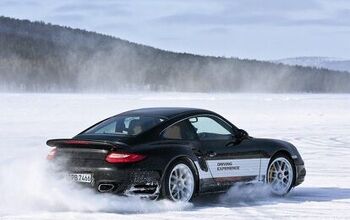
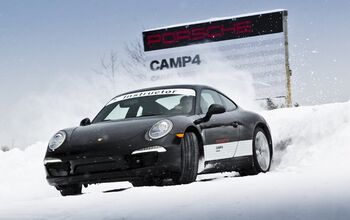
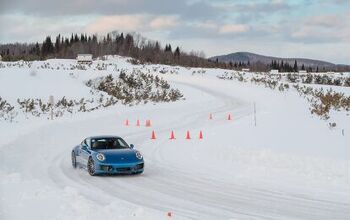



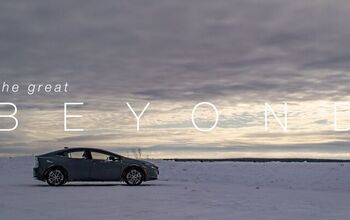
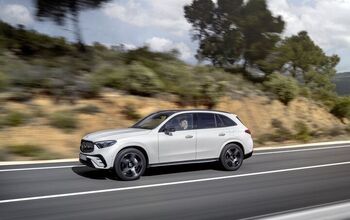
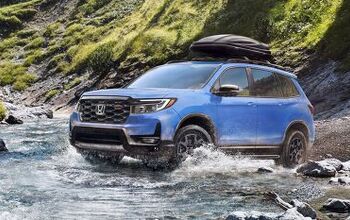
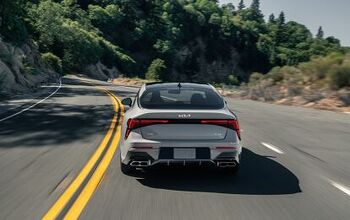


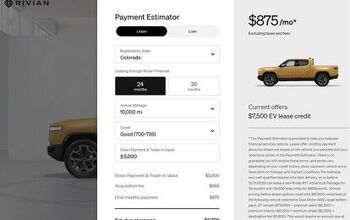
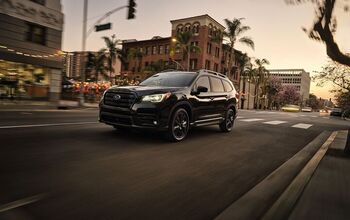




Comments
Join the conversation
http://gt36.blogspot.com/2010/03/nissan-370z.html Nissan 370Z http://gt36.blogspot.com/2010/08/audi-r8.html Audi R8 http://gt36.blogspot.com/2010/08/electric-car.html Electric Car http://gt36.blogspot.com/2010/08/dodge-viper.html Dodge Viper http://gt36.blogspot.com/2010/09/toyota-camry-hybrid-concept.html Toyota Camry Hybrid Concept